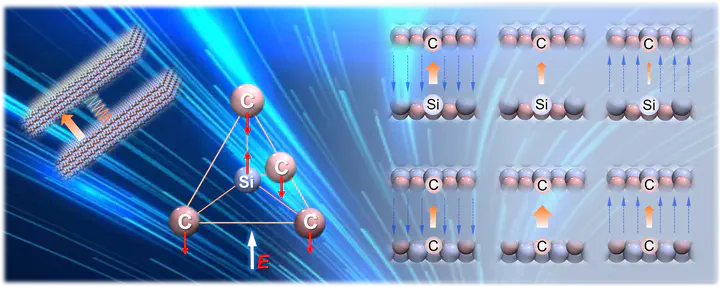
Abstract
Phonon, the primary heat carrier in semiconductors, can be tunneled across a vacuum nanogap by an electric field, while the underlying mechanism is not fully understood. Herein, nonequilibrium molecular dynamics simulations were conducted to study phonon heat transfer across an SiC–SiC nanogap under an external uniform electric field. Two pairs of atomic surface terminations, Si–C and C–C, were focused as the nonidentical and identical cases. In the Si–C case, a negative electric field enhances phonon tunneling, owing to the improved phonon–phonon coupling between interfaces, wherein optical phonons predominate over acoustic phonons. Conversely, phonon tunneling is suppressed under a positive electric field in the Si–C case and under both negative and positive electric fields in the C–C case. This suppression is attributed to increased phonon mismatches between interfaces and reduced optical phonon transmission. Consequently, both the strength and direction of the electric field are key factors in regulating thermal gap conductance. These findings offer a novel thermal management strategy for achieving high performance in nanoscale SiC power devices.